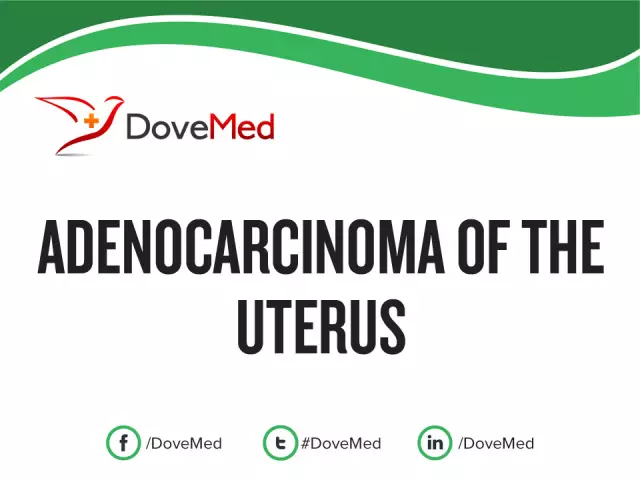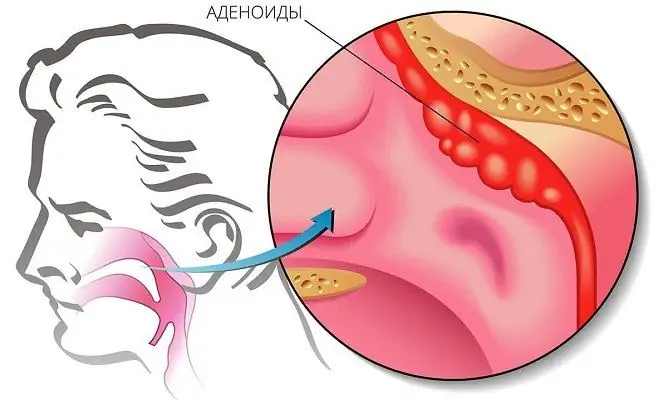- Author Rachel Wainwright [email protected].
- Public 2023-12-15 07:39.
- Last modified 2025-11-02 20:14.
Fissure of the rectum

Fissure of the rectum, or anal fissure, is one of the most common proctological diseases. It is a defect in the rectal mucosa, linear, oval or triangular in shape, ranging in size from a few millimeters to 2 cm. People of any age are susceptible to the disease, including rectal cracks in children, in women, this pathology is more common due to the anatomical features of the structure of the anus.
Reasons for rectal fissure
The causes of rectal fissure are inflammation of the gastrointestinal tract and mechanical trauma. Often these two reasons are combined.
Inflammation in any part of the gastrointestinal tract, including its upper part, such as gastritis or cholecystitis, increases the risk of rectal fissures. The sections of the digestive system communicate with each other, therefore, inflammation in one section leads to pathology of the mucous membrane throughout the entire gastrointestinal tract, increasing its vulnerability.
Mechanical trauma to the rectum occurs during the passage of too dense feces, as well as when a foreign body enters the anus.
The combination of these two facts is often the cause of rectal fissures in children with endobiosis (aka helminthiasis, simply worms). In this case, the lower part of the intestine is often inflamed and edematous, and the eggs of the worm, laid in the anus, cause severe itching. As a result, by scratching the anus, the child can cause damage to the mucous membrane of the anal area, which is aggravated by the passage of feces.
Rectal fissure symptoms
Distinguish between acute and chronic forms of rectal fissures. The chronic form occurs in the absence of treatment for an acute illness.
The main symptom of a rectal fissure is pain in the anus. With an acute fissure of the rectum, pain appears only during the act of defecation, it is intense, but does not last more than 15 minutes. For chronic fissures of the rectum, less intense but more prolonged pain syndrome is characteristic. Pain can also occur regardless of the act of defecation, for example, during prolonged sitting.
In both acute and chronic forms, one of the symptoms of a rectal fissure can be bleeding from the anus. As a rule, the bleeding is insignificant, the blood is scarlet, not mixed with the feces, as is the case with bleeding of the overlying parts of the gastrointestinal tract. Bleeding is associated with bowel movements, and is caused by the passage of dense feces through the damaged area.
Another characteristic symptom of rectal fissure is difficulty defecating, and associated constipation. Difficulties in defecation arise due to severe pain syndrome. The pain during the passage of feces, especially dense ones, can be so intense that a reflex spasm of the anal sphincter occurs. In the chronic form of the disease, a fear of defecation develops, which only aggravates the symptoms of rectal fissure, since the feces become denser and more injure the inflamed mucous membrane. Chronic rectal fissure may be accompanied by the discharge of pus from the anus.
With a fissure of the rectum in children, defecation is accompanied by crying, the child tries to avoid the pot, is capricious, and blood in the feces or on a napkin also attracts attention.
Diagnostics of the rectal fissure
In the presence of characteristic symptoms of rectal fissure, an examination of the anus is performed, and a digital examination of the rectum is also used. In view of the significant pain and the possibility of infection of the pararectal region, retromanoscopy is tried not to be used in this case, and in case of urgent need (for example, if a rectal tumor is suspected), anesthesia is preliminarily used.
Examination allows you to detect with an acute fissure of the rectum a linear defect of the mucous membrane with smooth edges, and with a chronic one - an oval or triangular defect, with overgrown granulations and scar tissue.
Additionally, laboratory tests of blood (for HIV, syphilis, hepatitis, blood sugar and general analysis) and feces are carried out. With a fissure of the rectum in children, it is imperative to examine feces for worm eggs.
Rectal fissure treatment
Treatment of a rectal fissure begins with the use of drug therapy, and in case of failure, they resort to surgical intervention.
Medication for rectal fissure includes the following measures:
- Providing regular soft stools, which is achieved by prescribing a dairy-based diet with sufficient fiber, as well as prescribing enemas. Enemas are carried out daily, with a weak antiseptic solution, usually decoctions of medicinal herbs are used for this purpose;
- The use of analgesic and anti-inflammatory drugs in the form of rectal suppositories, microclysters and warm baths, and in severe cases, in the form of injections directly into the area of the crack;
- Since in most patients, rectal fissures are combined with other diseases of the gastrointestinal tract, treatment of the underlying pathology is necessary.
In most cases, conservative treatment of a rectal fissure is successful. However, in some cases, usually in chronic forms of the disease, accompanied by significant growths of granulation and scar tissue, more radical measures are needed, then they resort to rectal fissure surgery.

Currently, the operation of rectal fissures is performed using minimally invasive methods - laser coagulation or cryodestruction. These are bloodless techniques that do not require the use of general anesthesia and a long hospital stay.
In stubborn cases, as well as large defects, resort to the classic operation of rectal fissures. The operation is carried out under general anesthesia, consists in dissecting the sphincter, excising the edges of the fissure and subsequent suturing of the edges of the wound. In the postoperative period, the use of local anti-inflammatory therapy is prescribed for a month. It is also necessary to follow a diet that prevents the formation of dense feces.
Alternative treatment of rectal fissures
With regular use and the right approach, alternative treatment of rectal fissures is very effective. In general, folk remedies are actively used to treat rectal fissures and in traditional medicine. Medicinal herbs in various forms are very effective - in the form of pastes, decoctions, infusions, baths, enemas, and also in the form of medicinal tea. For topical use, use chamomile, sage, oak bark, yarrow. In the form of microclysters, aloe and Kalanchoe juice are used. For the purpose of a general effect on the digestive tract, medicinal tea from chamomile, sage, St. John's wort is used.
Alternative treatment of rectal fissure can be successfully combined with the use of pharmaceuticals, allowing you to reduce the drug load on the body, which is especially important in chronic forms of the disease.
YouTube video related to the article:
The information is generalized and provided for informational purposes only. At the first sign of illness, see your doctor. Self-medication is hazardous to health!






